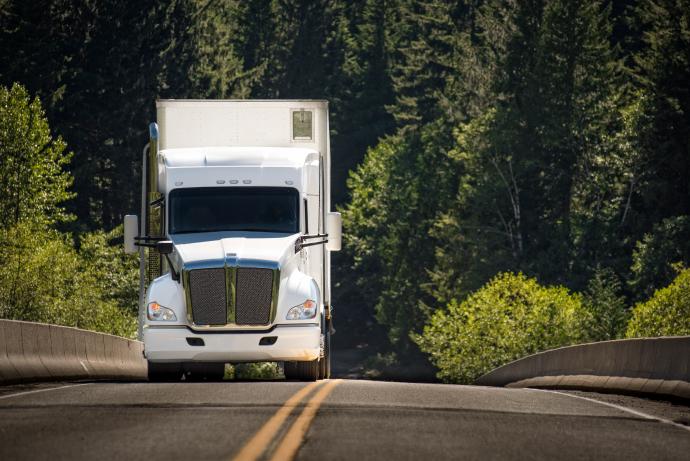in the bustling world of transportation, where the roar of engines meets the rhythm of the open road, commercial truck drivers play a vital role in keeping economies moving. Yet, for those labeled as high-risk due to factors such as driving history, vehicle type, or specific industry demands, finding appropriate insurance coverage can feel like navigating an intricate maze. This article delves into the complexities of insurance options tailored specifically for high-risk commercial truck drivers, illuminating the best routes to safeguarding both your livelihood and peace of mind. With a blend of expert insights and practical advice, we aim to empower you to make informed decisions that will keep you and your cargo protected on every journey ahead.
Understanding the Unique Challenges Faced by High-Risk Commercial Truck Drivers
High-risk commercial truck drivers often grapple with a myriad of unique challenges that can affect not just their daily operations but also their insurance options. These challenges arise from a combination of factors including driving history, vehicle types, and the nature of their cargo. For instance,drivers who have encountered accidents or violations in their past may find themselves labeled as high-risk,leading to increased premiums. Additionally, the responsibility of transporting hazardous materials or operating oversized vehicles adds layers of complexity to their insurance needs, as these factors inherently involve higher risks that insurers must account for.
To effectively navigate the insurance landscape, understanding the key components that influence policy pricing and availability is critical. High-risk drivers must consider several vital aspects:
- Driving History: Frequent accidents or traffic violations can lead to considerably higher premiums.
- Type of Cargo: Transporting perilous goods often necessitates specialized coverage.
- Vehicle age and Condition: Older trucks may present more risk and, thus, require additional insurance considerations.
- Geographic location: Some areas may have higher accident rates, influencing insurance costs.
When selecting the best insurance options, it’s beneficial for high-risk drivers to compare various policies and providers. utilizing the following table can help outline common insurance types and their key characteristics:
| Insurance Type | Description | Ideal For |
|---|---|---|
| Liability Insurance | Covers damage to other parties in accidents. | all commercial truck drivers |
| Collision Coverage | Pays for damage to your own truck after an accident. | Drivers with new or high-value trucks |
| Comprehensive Coverage | Protects against non-collision damages, like theft or vandalism. | Drivers in high-theft areas |
| Specialized cargo Insurance | Covers the unique risks associated with specific cargo types. | Drivers handling hazardous materials |

Assessing Coverage Needs: Key Considerations for High-risk insurance
When evaluating insurance options for high-risk commercial truck drivers, it’s crucial to identify specific coverage needs that align with the unique challenges faced in the industry. Begin by assessing the type of goods transported,the routes frequently taken,and the overall safety record of the driver. Additionally, consider factors such as the truck’s value, age, and maintenance history, as these can influence both the level of risk and the cost of premiums. Having a deep understanding of these elements will guide you in tailoring a policy that offers adequate protection without overspending.
Furthermore, it’s essential to evaluate the different types of coverage available. High-risk drivers may benefit from the following options:
- Liability Coverage: Protects against claims for bodily injury and property damage.
- Physical Damage Coverage: Covers damages to the truck due to accidents, theft, and vandalism.
- Occupational Accident Insurance: Offers benefits for injuries sustained while working.
- Uninsured Motorist Coverage: Safeguards against accidents involving uninsured drivers.
Additionally, maintain open communication with your insurance representative to explore potential discounts and tailor coverage based on your evolving needs. Analyze your options regularly to ensure your policy remains comprehensive and cost-effective, adapting as your driving circumstances change.

Top Insurance Providers for high-Risk Trucking: A comparative analysis
When searching for insurance options tailored to high-risk trucking, it’s essential to evaluate providers based on their coverage offerings, pricing, and claims processes.some of the top-rated insurance companies in this niche include Progressive, known for its flexible policies and competitive rates, and Great West Casualty, which specializes in commercial trucking insurance and offers extensive resources for safety and risk management. Other notable mentions include National Interstate, praised for customizable coverage plans, and Hagerty, which, while primarily known for classic car insurance, offers unique benefits for specialized trucking operations.
To help in your decision-making, consider the following factors when comparing insurance providers:
- Coverage Options: Look for policies that specifically address the unique risks associated with high-risk trucking, such as cargo liability and environmental pollution coverage.
- Discounts and Incentives: some providers offer discounts for safety training programs and accident-free records, making them more attractive to high-risk drivers.
- Claims Process: A streamlined and responsive claims process is crucial; research reviews or case studies that detail user experiences.
Here’s a comparison table to highlight some key elements:
| Provider | specialty | Coverage Availability | Claims Satisfaction Rating |
|---|---|---|---|
| Progressive | Flexible Policies | Nationwide | 4.5/5 |
| Great West Casualty | Truck-Specific | Nationwide | 4.7/5 |
| National Interstate | Customization | Regional | 4.4/5 |
| hagerty | Specialized Trucks | Limited | 4.2/5 |

Strategies for Lowering Premiums Without Sacrificing Coverage Quality
For high-risk commercial truck drivers striving to reduce their insurance premiums while maintaining robust coverage, several strategies can be employed. One effective approach is to shop around and compare quotes from different insurers. Each company assesses risk differently, so taking the time to get multiple quotes can reveal significant savings. Additionally, consider opting for higher deductibles; this can lower your premium costs, but it’s essential to ensure that you can comfortably afford the deductible amount in the event of a claim.
Another valuable strategy is to invest in driver training programs and safety certifications. Manny insurance companies offer discounts to drivers who have completed recognized safety training courses, as this demonstrates a commitment to safe driving practices. Moreover, implementing vehicle safety features such as GPS tracking and collision avoidance systems can reduce premiums by minimizing the risk profile of your fleet. Additionally, consider forming or joining a trucking association, which may offer access to group insurance plans that are generally less expensive and provide comprehensive coverage tailored to the unique needs of high-risk drivers.
Q&A
Q&A: Best Insurance Options for High-Risk Commercial Truck Drivers
Q1: What defines a high-risk commercial truck driver?
A1: A high-risk commercial truck driver is typically classified as someone with a history of accidents,traffic violations,or significant claims. Other factors can include the type of cargo transported, the routes driven (urban vs. rural), and the driver’s experience level. Essentially, if a driver poses a higher risk to insurance companies, they fall into this category.
Q2: why is it significant for high-risk drivers to secure adequate insurance coverage?
A2: Obtaining adequate insurance coverage is crucial for high-risk drivers due to the higher likelihood of accidents and claims. Without sufficient coverage, these drivers can face significant financial liability from accidents. Moreover, having the right insurance can also enhance peace of mind, allowing drivers to focus more on their jobs without the constant worry of potential financial repercussions from road incidents.
Q3: What types of insurance coverage should high-risk commercial truck drivers consider?
A3: High-risk commercial truck drivers should consider several types of insurance coverage, including:
- Liability Insurance: This is essential and typically required by law, covering bodily injury and property damage caused to other parties.
- Cargo Insurance: This protects the freight being transported and is crucial for drivers handling valuable or fragile goods.
- Physical Damage Insurance: This covers damage to the driver’s truck from accidents, theft, or vandalism.
- Uninsured/Underinsured Motorist Coverage: This can protect against accidents with drivers who lack sufficient insurance.
- Workers’ Compensation Insurance: This is vital for protection against job-related injuries or illnesses if the driver is an employee.
Q4: Are there specific insurance companies known for catering to high-risk commercial truck drivers?
A4: Yes, several insurance companies specialize in high-risk commercial truck insurance, including Progressive, Geico, and Great West Casualty. These companies typically have tailored policies and flexible payment options suited for high-risk drivers. it’s advisable for drivers to shop around and compare quotes to find the best fit for their unique circumstances.
Q5: How can high-risk commercial truck drivers lower their insurance premiums?
A5: High-risk commercial truck drivers can possibly lower their insurance premiums by:
- Maintaining a clean driving record: Safe driving habits can lead to reduced premiums over time.
- Taking safety and defensive driving courses: Many insurers offer discounts to drivers who complete these courses.
- Increasing their deductibles: Opting for a higher deductible means lower premiums, though this comes with more out-of-pocket costs in the event of a claim.
- Bundling policies: If a driver also needs personal vehicle insurance, bundling can lead to discounts.
- Leaving claims alone: Avoiding multiple small claims can help keep premiums down.
Q6: What should high-risk drivers do if they are denied coverage?
A6: If high-risk drivers find themselves denied coverage, they should first request a detailed explanation from the insurer to understand the reasons behind the denial. Next, they can seek out high-risk insurance brokers or companies that specialize in insuring drivers with a problematic history. Additionally, maintaining a safer driving practice can definitely help improve their insurability over time.
Q7: Are there any changes in legislation that could affect high-risk commercial truck drivers’ insurance?
A7: Legislative changes can vary by state and are frequently updated,but drivers should stay informed about regulations concerning commercial insurance requirements,safety standards,and qualifications for commercial drivers.It is indeed always a good practice for drivers to consult with a educated insurance agent who can provide the latest information regarding any legal changes that may impact their coverage needs.Q8: Can technology play a role in insurance for high-risk commercial truck drivers?
A8: Absolutely! Technology such as telematics can help high-risk drivers demonstrate safer driving habits. Many insurance providers offer discounts for using devices that monitor driving behavior,allowing drivers to potentially reduce their premiums. Additionally, dash cameras can provide evidence of safe driving and help resolve disputes after incidents, further assisting drivers in maintaining favorable insurance rates.
By understanding their unique needs and actively engaging with the insurance market, high-risk commercial truck drivers can find appropriate coverage that ensures both compliance and peace of mind on the roads.
To Conclude
navigating the world of insurance as a high-risk commercial truck driver can often feel like traversing uncharted territory. However, with the right knowledge and proactive approach, you can find insurance options that not only protect your assets but also support your professional journey. From specialized coverage providers to innovative policy features, there are numerous avenues tailored to meet your specific needs.As the landscape of the trucking industry continues to evolve, staying informed and understanding your choices is crucial.Investing time in researching and comparing policies can lead to significant savings and peace of mind on the road. remember, every mile driven is a step toward growth and success, and with the right insurance policy in place, you can drive with confidence.
So, whether you’re hauling freight across the country or managing a fleet, let this guide serve as your roadmap to securing the best insurance options available. Safe travels.
